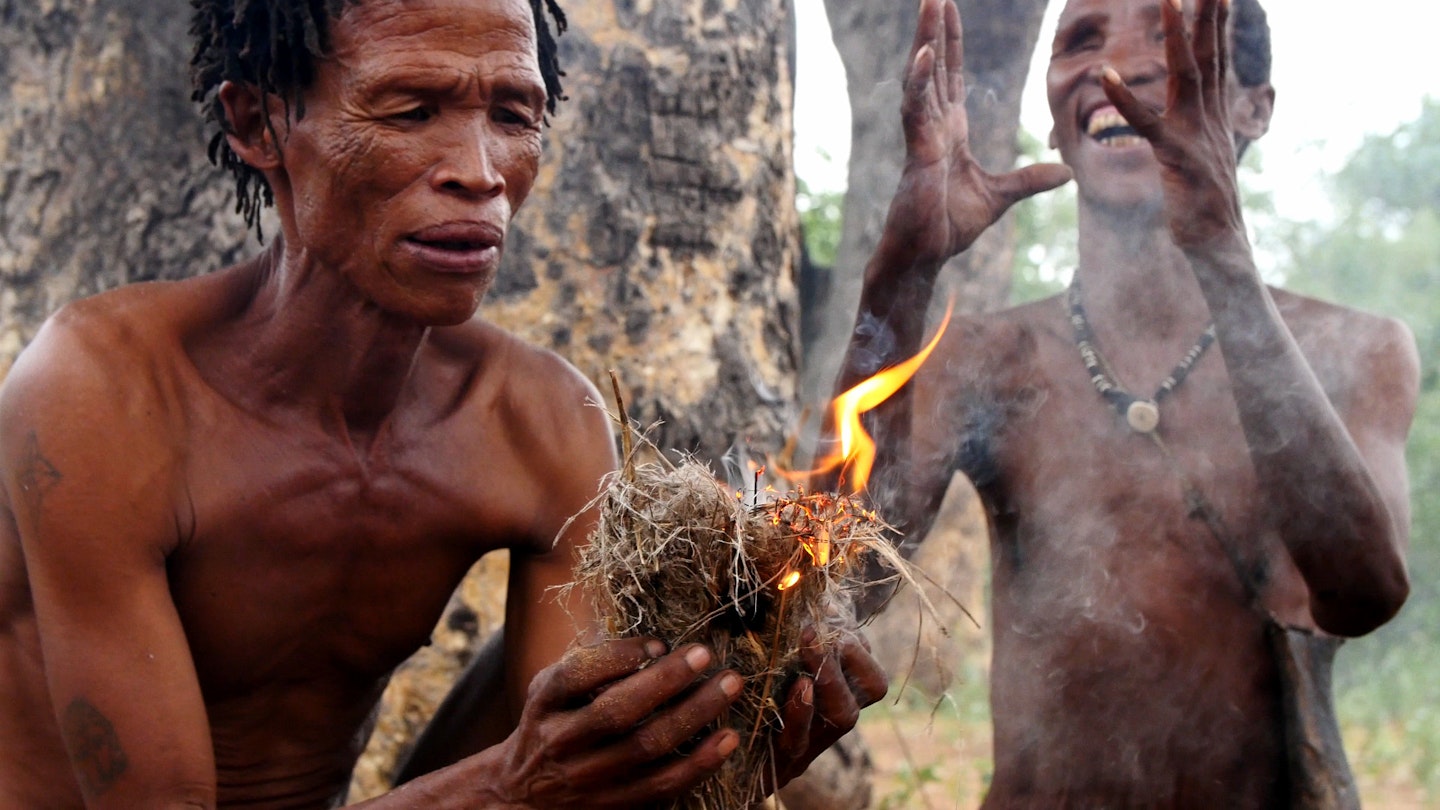On the fringes of the Kalahari Desert in Namibia, the Living Hunter’s Museum of the Ju/’Hoansi serves as an open-air education facility for the indigenous San people (formerly known as Bushmen). Moreover, it acts as a window for visitors into their fascinating way of life, which has persisted in the region for tens of thousands of years.
This sustainable communal business also ensures that this long-threatened heritage is understood, valued, and preserved by future generations in Namibia.
Dual lives
On arrival at the reception of the Living Hunter’s Museum of the Ju/’Hoansi, you will find scores of locals ready to offer a warm welcome. Some are dressed in traditional animal skin loin cloths, while others appear relaxed in contemporary attire.
Henry, the main guide at the museum, embodies the duality of the local community’s modern identity. He is just as comfortable discussing the San’s tracking techniques and sacred animals as he is lamenting the lack of mobile reception or Manchester United’s recent losses.
Folk tales around the campfire
Visitors often set up tents on the soft sand beneath tall Mangetti trees, surrounded by dense bushveld. The campsite, while rustic, offers a unique experience with simple facilities like long-drop toilets and bucket showers. The sense of isolation along with a spectacular star-studded sky more than compensates for a lack of modern comforts.
After dinner, expect to be joined around the campfire by Henry and another elder from the Ju/’Hoansi community. In a striking display of tradition, Henry dons his traditional regalia, placing his spear, bow, and arrows on the sand while translating for his companion. Together, they share captivating tales of encounters with lions and long hunting trips, using the rich language of the San which includes numerous palatal clicks.
A shared learning experience
The next morning, Henry leads visitors on a guided bush walk, which begins with a visit to a model San settlement. Members of the local community delight in observing visitors attempting to start a fire with sticks and dried grass, providing encouragement until Henry successfully demonstrates the task.
Throughout the bush walk, discover the intimate relationship the Ju/’Hoansi have with their environment. Learn about various plants they utilize for medicinal and nutritional purposes, as well as poisonous ones used on their arrowheads to ensure swift hunting. Local men also showcase the methods they use to create traps for smaller wildlife.
Excited younger community members follow the group, actively engaged in the learning experience. This connection between generations of Ju/’Hoansi San communities and their heritage is vital, especially as elements of their culture face the risk of being forgotten.
A threatened way of life
Historically, many San populations in Botswana, Namibia, and South Africa faced violent uprooting from their ancestral lands during the colonial era, leading to displacement and marginalization. Consequently, the Ju/’Hoansi are unique in that they still inhabit their ancestral lands in a formerly known area as Bushmanland, today known as Nyae Nyae. However, with only around 1000 Ju/’Hoansi remaining across 36 small villages, their traditional way of life is often overlooked and undervalued.
Visiting the Living Museum of the Ju/’Hoansi-San provides a valuable insight into community-driven cultural initiatives that require support. The first people of southern Africa continue to offer invaluable lessons about harmony with nature, and there is no better place for these teachings than within their own traditional setting.
How to visit
The Living Museum of the Ju/’Hoansi-San is located about 7km along a dirt road off the C44, near Tsumkwe, approximately a four-hour drive from Grootfontein. For those opting for self-drive, a 4WD vehicle is recommended, especially if you plan to head to nearby Khaudum National Park. Alternatively, consider incorporating a visit to the museum into a guided tailor-made safari.




